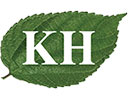Ellagic Acid has a Variety of Dermatological Applications
2023.06.09
Ellagic acid is a polyphenol compound found in a variety of fruits and nuts, such as raspberries, grapes, strawberries, pomegranates, and walnuts. Like other polyphenolic phytochemicals, ellagic acid has also shown antioxidant effects in in vivo and vitro. In the application of dermatology, ellagic acid is very effective in improving the skin aging caused by ultraviolet light and treating pigmentation, showing a good application prospect.
1. Ellagic acid for treatment of skin photoaging induced by ultraviolet light
The mechanism of ellagic acid to protect skin damage caused by UV rays is various. Available evidence suggests that ellagic acid can reduce UV-induced matrix metalloproteinase production, thereby reducing collagen degradation. In addition, ellagic acid can upregulate Nrf2 (a transcription factor that controls the expression of several genes encoding antioxidant proteins and cellular protection mechanisms).
2. Ellagic acid can improve pigmentation
Tyrosinase is a copper-containing enzyme that is key to the production of melanin. Ellagic acid inhibits tyrosinase through copper chelation at the active site, thereby reducing the formation of melanin. 2 studies suggest ellagic acid may be effective in treating pigmentation. Shimogaki et al reported that topical application of ellagic acid (1% w/v) improved UV-induced pigmentation within four weeks; Yoshimura et al. demonstrated that oral ellagic acid-rich pomegranate extract (100 mg/kg/day vs 1000 mg/kg/day) inhibited UV-induced pigmentation in a dose-dependent manner in brown guinea pigs.
In addition, several human clinical trials have also examined the effectiveness of ellagic acid in treating hyperpigmentation. A randomized, double-blind, placebo-controlled trial found that oral ellagic acid-rich pomegranate tablets (100-200 mg/day) significantly inhibited pigmentation in subjects with minor sunburn due to UV exposure. Ertam et al. compared the effectiveness of synthetic 1% ellagic acid, naturally extracted 1% ellagic acid, and 1% arbutin in the treatment of melasma in a randomized, open study. Both formulations of ellagic acid are as effective as the well-known whitening agent arbutin in improving pigment density. A recent study reported that a combination treatment of topical 0.5% ellagic acid and 0.1% salicylic acid was as effective as 4% hydroquinone in improving several clinical and instrumental measures of pigmentation.
Kingherbs Limited provide Ellagic acid has a variety of dermatological applications. Existing evidence has shown that ellagic acid may reduce UV-induced skin aging and wrinkles in the body. Some studies have shown that topical and oral forms of ellagic acid are effective in preventing and treating pigmentation. While hydroquinone is considered the important standard for whitening and removing spots, it can cause permanent skin bleaching. In contrast, ellagic acid has not been found to have a damaging effect on melanocytes and may be a safe alternative.
 Share
Share


